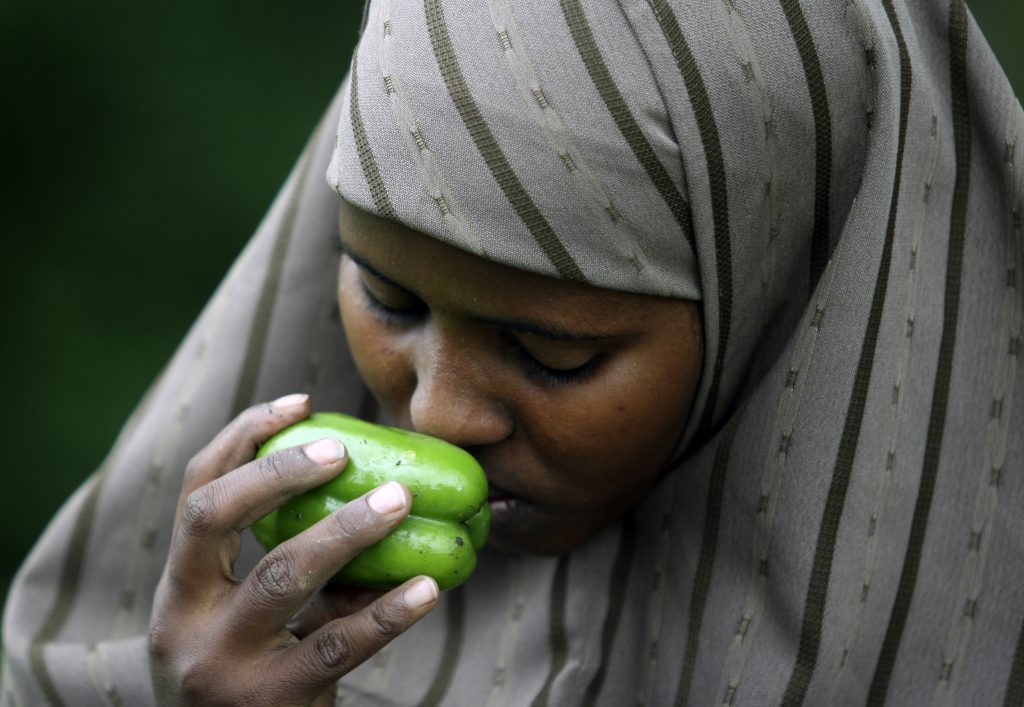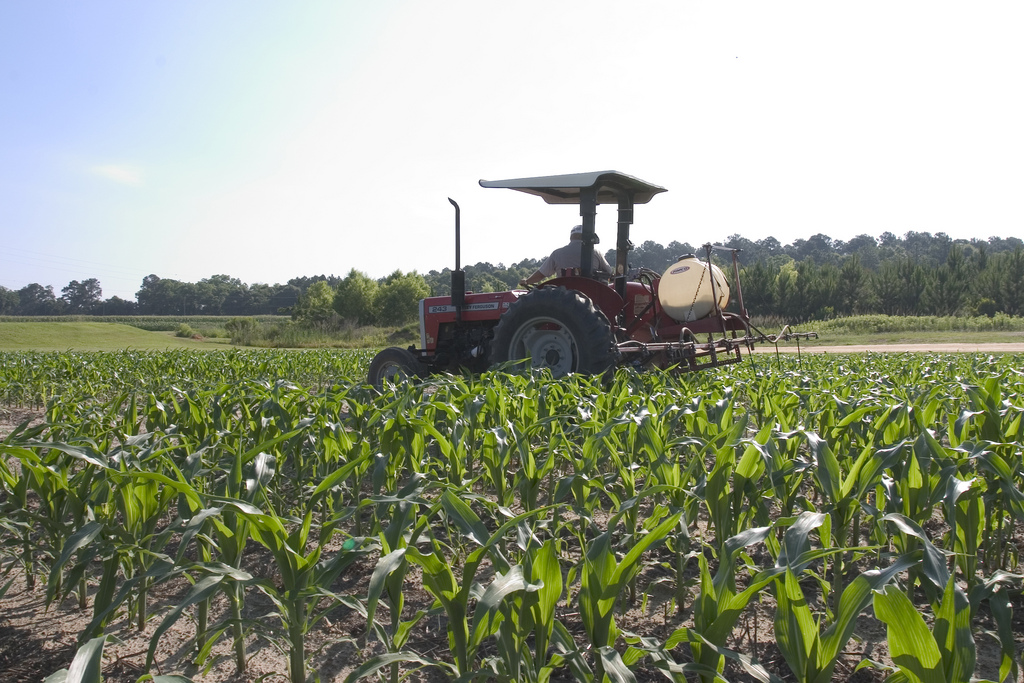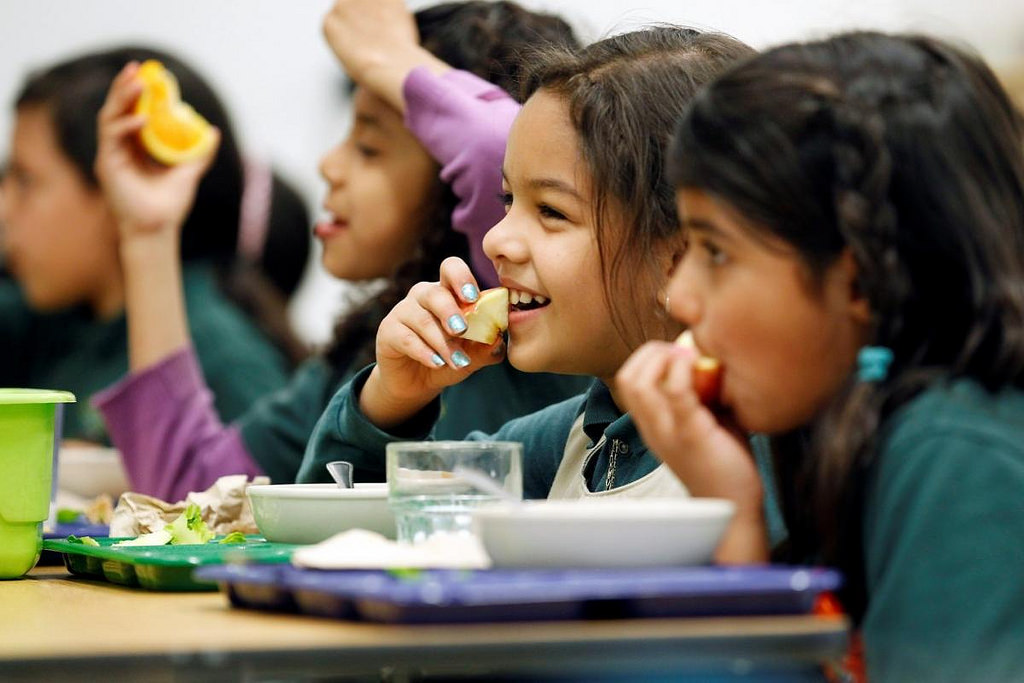Food Is About Far More Than Bodily Sustenance

Fatima, a refugee from Somalia who is a newcomer to Canada, has been having trouble in her local supermarket. [1] [1] All names in this piece other than the authors’ are pseudonyms. Back home, she was accustomed to milk fresh from the cow. “In Canada I don’t even know if it’s real milk or fake milk,” she said. “I don’t know the difference. Is there milk that has pork-related ingredients in it?”
Life for new immigrants is hard in many ways. But one thing that is rarely recognized is the dramatic shift for newcomers in what they eat. People who are used to eating freshly killed chickens and seasonal vegetables—and drinking milk from their cows—are suddenly faced with an unfamiliar selection of produce, a range of processed foods, and a plethora of nonperishable goods from the food bank (if they need them) that are in some cases so odd that they are perceived as “poison.”
Food is at the heart of culture: It is at the center of gatherings ranging from weddings to funerals, and it’s a critical part of everyday life. Not only are ingredients and recipes important but so are people’s foodways and customs. In many countries, it is common to cook a large pot of food in anticipation of uninvited guests; those who have extra food share it, and they expect to have food shared in return. Such social arrangements can increase food security in the community.
Some immigrants and refugees who settle in Western urban centers find that they do not have enough resources to meet their food needs. As defined by the Food and Agricultural Organization (FAO), “food security exists when all people, at all times, have physical and economic access to sufficient, safe, and nutritious food to meet their dietary needs and food preferences for an active and healthy life.” Many officials, however, approach this problem as one of “hunger” with a limited understanding of food insecurity that focuses on providing sufficient food for survival—and nothing more. Our research shows that newcomers’ experiences with food insecurity—based on the stories they share—are about much more than satisfying their physical needs; food consumption has many social and cultural dimensions as well.
Based on our findings, we argue that immigrants and refugees deserve more support in adapting to a new food system; this involves maintaining and modifying their traditional foods—and their ways of obtaining, preparing and eating those foods—as well as learning to cook some of the new cuisines of their host country. Fortunately, some organizations are emerging to support this process. In Canada, where we work, not-for-profit community food centers are establishing dignified and inclusive spaces where food-insecure families can access nutritious and culturally appropriate foods. Families are also able to cultivate cooking skills while celebrating food and making it social.
I (Tina Moffat) am an anthropology professor, and, along with my colleagues, I have been studying how living in food-insecure households affects newcomers’ ability to maintain healthy and culturally appropriate diets. In 2014, anthropology student Charlene Mohammed (co-author of this article) and I interviewed 24 newcomers and 22 food service providers in the city of Hamilton to gather the stories of newcomers living with food insecurity. (A national survey conducted in 2014 showed that 15 percent of recent immigrants are food insecure.) Hamilton is a medium-sized city in Southern Ontario, and in 2015 it was the 10th most popular destination city in the country for immigrants and refugees. People who find a new home in this city come from a wide range of regions: the Middle East, Asia, Europe, Africa, and Central America. Canada, like the United States, is a nation of immigrants, so helping newcomers successfully adjust to their new lives is fundamental to the health and well-being of the population.
Fatima’s concern about pork in her milk highlighted just how unfamiliar Canada is to her: In this crazy place where everything is different from home, perhaps there is pork in the milk—who knows? But her apprehension also stems from other problems that are common to many newcomers, such as having specific dietary restrictions. Fatima, who is Muslim, must eat halal (foods that have been prepared, processed, and stored in accordance with Islamic law), and she is unable to read English. “If you don’t know how to read, you don’t know what you’re eating,” said Fatima. “It’s going to be very difficult for me if I have to go and ask everyone, ‘Can you read this for me?’ My kids are also new, so they don’t speak English.” And Fatima has diabetes, which also influences her concern about what she is eating.
A surprising finding from our research was that newcomers who are food insecure worry as much or more about the quality of their food as about the quantity of it. Multiple newcomers voiced concerns about the pesticides and chemical fertilizers that are used to grow food in Canada, and some said that they wished the government would set firmer legislation to minimize their use. They noted that in their home countries food was healthier and safer because it was grown without chemicals, and that if they had the money in Canada they would buy organic food, which is pricier but purer. As an Egyptian woman dramatically put it, “You buy poison if you don’t have the money.”
Newcomers also spoke of not knowing what to do with the canned beans or peas they were given at food banks. (Another common concern about food banks was that the food was expired.) A dietician at one health center, which served many clients from Africa, said that she knows eating canned food is not the healthiest, but she needs to teach immigrants who are living on a tight budget to cook with ingredients that are available to them.
While there are ethnic food shops and a range of foods available in Hamilton, newcomers often said that the food they make in their new home country just doesn’t taste the same as it did in their country of origin. Some of these sentiments may be based in nostalgia or yearning for the familiarity of the tastes they’re accustomed to. Regardless of the roots, such impressions have an impact. As a woman from Iraq explained, “I don’t enjoy eating anymore. I enjoyed food back home, not here.” Eating becomes solely about survival. People may have food, but they may not be nourished culturally, socially, or emotionally.
These findings deepen our growing understanding of how eating is not just about physical needs; it has deep social and cultural connections to life itself. Amaal,* another Somali refugee, put it this way: “Here, in Canada, everyone has their own plate and everyone has their own food, and people are eating in their own corners. But in Somalia, it’s very different. You would have mats or something, and you would have a big plate of food and people would eat together.” Sitting down to a meal and sharing with neighbors is good for the body and soul, but these cultural traditions get lost in the shuffle of a more modern, Western approach.
Community Food Centres Canada (CFCC) is attempting to address and counter this gap. CFCC believes that food should be social and that bringing people together around good food is a meaningful step toward addressing food insecurity. There are now eight Community Food Centres across Canada. The Hamilton Community Food Centre (HCFC) is the latest, having just opened its doors in April.
One of the weekly programs at HCFC that is designed specifically for immigrants is the Intercultural Community Kitchen, a collaborative cooking group. Participants share their cooking expertise and teach one another how to create ethnic-specific meals. The center also hosts a low-cost Good Food Market & Café on Saturday mornings, offering a range of subsidized fresh produce. In addition, HCFC provides a space for community gardening. The center’s food programming is mixed with other services, including language exchange and opportunities for newcomers to access much needed skills and information about living in Canada. These range from understanding tenant rights to learning how to contact a political representative.
North Americans tend to assume that food choices are in the hands of the family (usually the mother) or individual. Social service organizations that focus on educating people about what to buy and cook often miss the fact that some families do not have the resources to purchase healthy and satisfying foods. In May, the government of Canada announced that it will create, for the first time, a national food policy. Many organizations have been contributing to the development of this policy, including Food Secure Canada, which has proposed that the national food policy recognize “culturally appropriate foods as part of the right to food.” In order to promote healthy eating in culturally appropriate ways, they have also recommended integrating cultural diversity into the national nutrition guide.
While these are great strides forward, food policies in Canada and elsewhere must also recognize that all food insecure families—including those of newcomers—require more income assistance and living wages in order to afford to buy nutritious and culturally satisfying foods. Newcomers will play an important part in transforming our food system. Refugees and immigrants carry a great deal of wisdom about food and cooking. The challenges lie in how to adapt their skills to the Canadian context and how to help the rest of us learn from these knowledgeable populations. Western societies have gained so much over the past decades by adopting foods from other countries, from curries to kebabs. We have yet more to gain from learning about the rich variety of customs that people from around the world bring to the table.




























